We vowed to make an earlier start today and we did, sort of. That is we got off an hour earlier than yesterday but an hour later than we had hoped. We took the Metro down to the city center, accompanied for several stops by a group of very young school kids, perhaps
on a field trip. Very cute and strangely, the two right in front of us were carrying on totally in English.
We had several sights on our to-do list before meeting up with our Sandeman "Free Tour" guide at 2:00 (we had a good experience with our Sandeman free tour in Jerusalem and so figured we would give it another try). First to be checked off was the Santa Justa Lift, which was designed by a student of Gustave Eiffel and its appearance certainly confirmed
the Eiffel influence. We walked a few blocks downhill to reach the base, however, there was already a huge line to board, and it did not seem worth the wait. Also, we realized that it was simply ascending to the same level on the same hill we had just walked down and we would have simply ridden up, looked around, and then walked down the same streets again to get to our next destination, the Castelo de Sao Jorge, which was up a different hill. The elevator would not have saved us any uphill walking at all... glad we passed it up. It was a rather steep uphill walk to the castle but early enough in the day it wasn't too hot. Still we were a bit winded when we got to the front entry, but standing in the ticket line for 15 minutes cured that. Everything here is heavily subscribed by tourists it seems.
The castle is located at the top of a hill in central Lisbon and shows signs of Iron Age and Roman settlement, continuing through Islamic and medieval periods, but what we see today
largely dates from rebuilding and expansion starting in the late 1200s or early 1300s and onward. The walls were extended to create a quadrangle and 11 towers added, as well as a barbican and moat on the more vulnerable south and east sides. A royal residence from the 13th-16th centuries now serves as the site museum, in which we learned the earliest way to make change (and apparently quite common in the Middle Ages), cutting a larger coin into smaller pieces. Also, the entire site was infested with noisy peacocks (and peahens, who were a lot quieter), preening and displaying for the tourist masses.
The forecast afternoon rain seemed to be looming in the distance so we set out for lunch in the Barrio Alto quarter (back downhill and then up again of course), which is known as the bohemian area for nightlife and hip bars and
pubs. Alas, as we walked through the narrow streets we discovered that most of the joints were not open for lunch. Makes sense if you're going to be open until 4 a.m., but we started to get hungry and worried. Luckily, we came across A Cultura do Hamburguer, where we had a good host, a good beer and a great hamburger. Then it was off to get to the "free" tour meeting point on time, stopping only for a sweet cake and to watch the iconic trams go by (we never had time to take one, and they were always SRO anyway).
We met our Sandeman group in the Praca do Comercio and spent almost three hours walking through the Alfama district. Our guide Jaime was pretty knowledgeable and
personable, and we quickly made our way, wait for it, uphill to the Castelo de Sao Jorge. The good news was, Jaime knew a much shorter and easier route than the one we had taken earlier and, better yet, took us to a working elevator that was not as scenic as the Santa Justa but a lot more useful. We didn't enter the Castle, but made our way downhill from there through narrow streets with Jaime pointing out evidence (including tile styles) of the melting pot population of this old quarter, the only area to survive the 1775 earthquake intact. Among other things we learned that the earthquake was the mechanism for ending the church's domination of the city and ownership of all the valuable real estate along the river. With everything in ruins, the monarchy and
city government simply took it all over and rebuilt it to their satisfaction, including the Praca do Comercio where we had first met.
Jaime also was careful to point out and discuss some not-so-admirable aspects of the area, including evidence of gentrification and AirBnb invasion, which crowds out the lower income population and results in fancy remodeled buildings next to empty run-down ones. The former Jewish quarter was also poignant, as we learned Portugal protected its Jews as much as possible and their skills were instrumental in enabling the Portuguese to out-navigate the
Spanish and others early in the Age of Discovery. Later, Jews were persecuted here too, as some local artwork pointed out.
Close to the end of the tour, Jaime stopped at the small door of his friend, a lady who makes ginjinha, a sour cherry and cinnamon liqueur, of which we all bought a shot and downed right there on the cobblestone street. Well, some of us consumed two shots, one in a chocolate cup. We were so taken with the taste that we bought a couple of small bottles to take home with us. Jaime also explained the history of fado, which started in this quarter, and pointed out a couple of fado cafes to visit later. Just as we approached the end of the tour at the Lisbon Cathedral, the
rain finally started to pour in earnest. Jaime had promised to take anyone interested to a small local bar for a glass of vinho verde after the tour, so several of us fled there with him and pleasantly waited out the rain.
This time we had to take three different Metro lines home, which we did successfully and picked up a to-go sandwich in one of the Metro shops along the way. We were looking forward to another shot of that ginjinha before bed, and found to our dismay that the cork used by the little old lady was not watertight at all and some liquid had already seeped out of our two bottles and into their plastic baggies. No chance we could pack these in our luggage for flight, so we sadly poured the precious liquid out, although not before finishing one bottle. We resolved to look for a commercial version to take home with us.

 Lisbon, Lisbon, Portugal
Lisbon, Lisbon, Portugal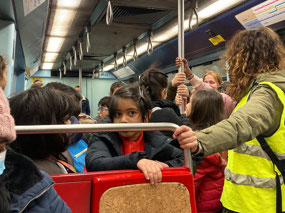
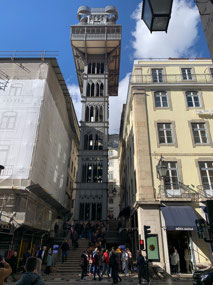
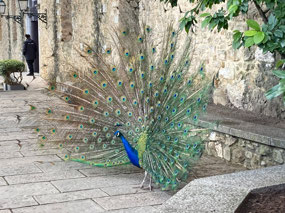
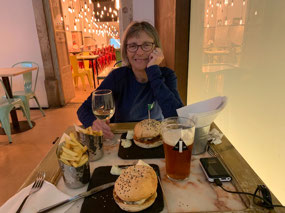
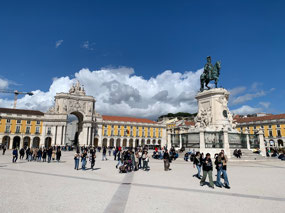
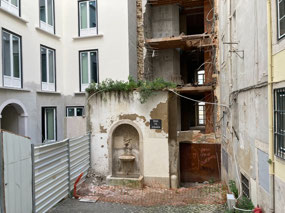
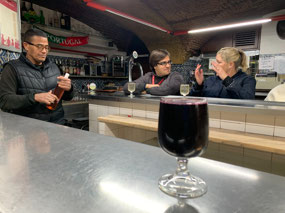
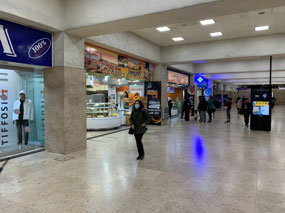



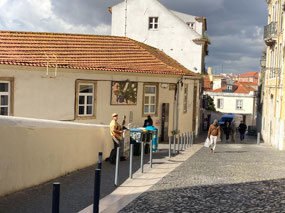
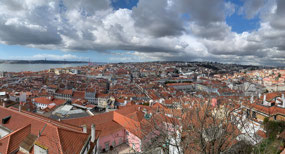
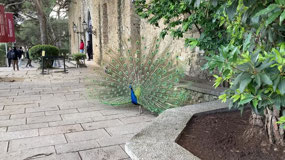
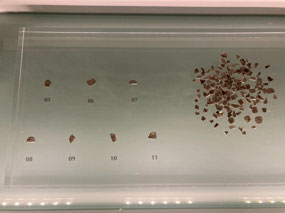
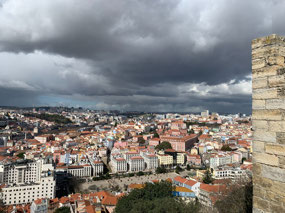
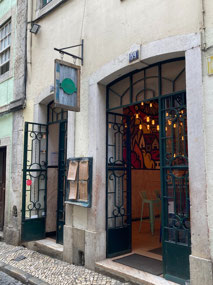
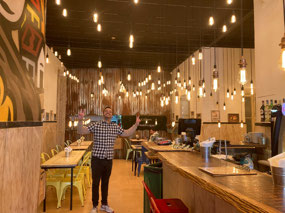

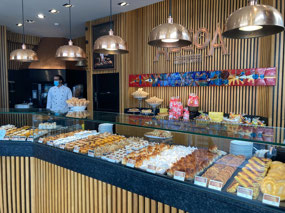
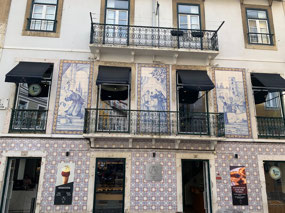
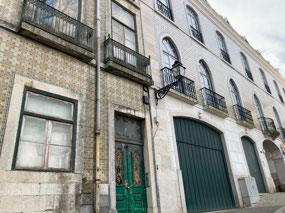
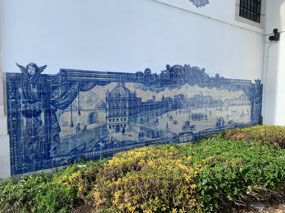
2025-05-22